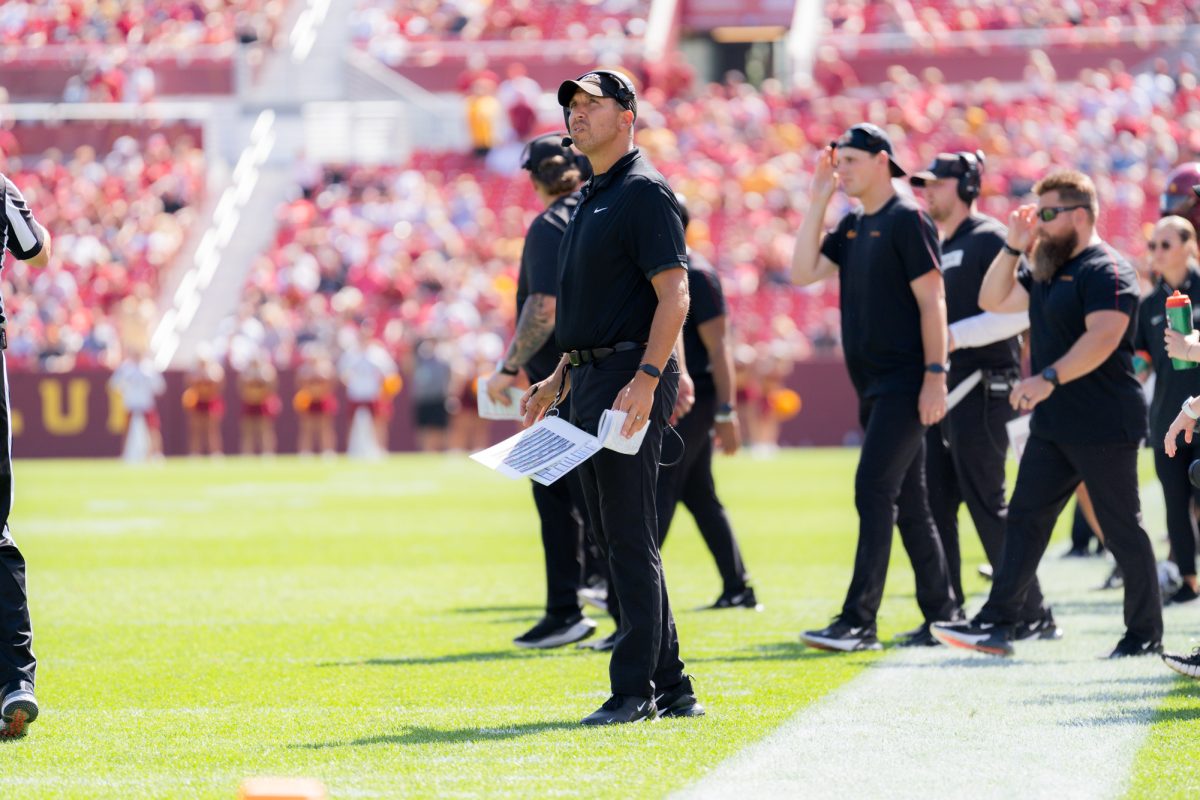Credit card use by college students has exploded in last four years
February 5, 1998
As freshmen, students at Iowa State expect to make new friends and receive an education. What they may not expect, but will receive from ISU, are numerous opportunities to apply for an ISU Alumni Association credit card.
The ISU Alumni Association sends credit card applications to every ISU student 2 to 3 times per year. More than 27,000 people carry the credit card. About 6,000 of them are students, meaning more than one-fifth of the ISU student body has applied for and received the ISU credit card.
According to Anne Swift, supervisor of the Financial Counseling Clinic at ISU, there has been an explosion of credit card use among college students in the last four years.
Recent studies show that 82 percent of college students have credit cards. In 1995, the average card balance of a student graduating from college was $2,100.
“I was very ignorant when I got [my first credit card],” said Stacy Wagner, junior in animal ecology. “I was warned by friends that you can get into trouble with credit cards, but I never thought it would happen to me.”
She received her first credit card, the ISU Alumni Association credit card, when she was a freshman. “[The credit card company] called to tell me about the card, and then they sent information in the mail along with an application to fill out,” Wagner said.
Frankee Oleson, director of membership development at the ISU Alumni Association, said every student receives information about the credit card.
“Every ISU student receives an application several times a year through direct mailing and are also contacted by tele-marketers,” Oleson said.
This kind of aggressive marketing has led more and more students to subsidize their education and their lifestyles with credit cards. The debts come on top of student loans, and many students say they feel overwhelmed by the consequences of their credit card use.
Swift said the problem isn’t the availability of credit cards to college students, and the solution isn’t making them harder to get. It’s educating students on how to use credit and how to manage their money.
Oleson said because [the Alumni Association] knows this credit card is the first for many students, they require their credit grantor (MBNA) to include educational material with each credit card application.
“Some students do abuse credit cards,” Oleson said. “I wish that didn’t happen, but [one] has to be realistic — it does. We are doing what we think we can to help.”
However, Wagner said she doesn’t think many students will read the information.
“There was tons of stuff with [the application]. I probably didn’t look at it at all. I can’t see other students reading it either,” she said. “Students today have all kinds of access to credit cards.”
One reason university administrators may feel positive about the ISU credit card is that the university receives a portion of every dollar charged on the cards.
“Individually it is not a large percentage [of the amount charged on the credit card], but the Alumni Association receives a royalty for every dollar charged,” Oleson said.
Though Oleson said she is contractually bound not to give out the exact percentage of money the Alumni Association receives, she did say, “With the number of cards that people have, it adds up to quite a bit of money that helps support lowa State.”
She said the money received helps support on-campus groups such as the Student Alumni Association.
Wagner said she was unaware that lSU receives a portion of the money she spends. “That kind of pisses me off,” she said. “[Students] pay them enough already. Why the hell do they scam us on this card? I hate the card.”
Though Oleson said it is not confidential that ISU receives money from the credit card, that information is nowhere to be found on the credit card application.
It states the applicant is applying for “the only credit card that supports lowa State University;” it does not say how that support is given.
“I do not believe that we are offering something that is bad,” Oleson said. “We hear far more positive than negative [about the credit card].”
Wagner said she doesn’t think she would be in the same financial situation if she had not received this card.
“I think that at that point in my life I wasn’t prepared for [credit cards]. I probably shouldn’t have been offered the card,” she said.
“My credit card debt is my biggest stress,” Wagner said. “More than school, more than anything, it’s my financial problems.”
Although Wagner was not employed and had no previous credit history when she applied for the ISU credit card, she received a $1,000 limit. She said the high credit limit “definitely” led her to abuse the card.
“I had no clue what was an appropriate limit,” Wagner said. “It was my first card … $1,000 seems like a lot to me now.”
Oleson said applicants for the card are not given the same credit limits.
“Each application is looked at individually [to set the credit limit]. It is not a cut and dry amount. [The applicant’s] income and ability to pay is all looked at,” Oleson said.
In Wagner’s opinion, students are given such high credit limits because the credit grantors know that students are going to charge many things that they can’t pay for.






